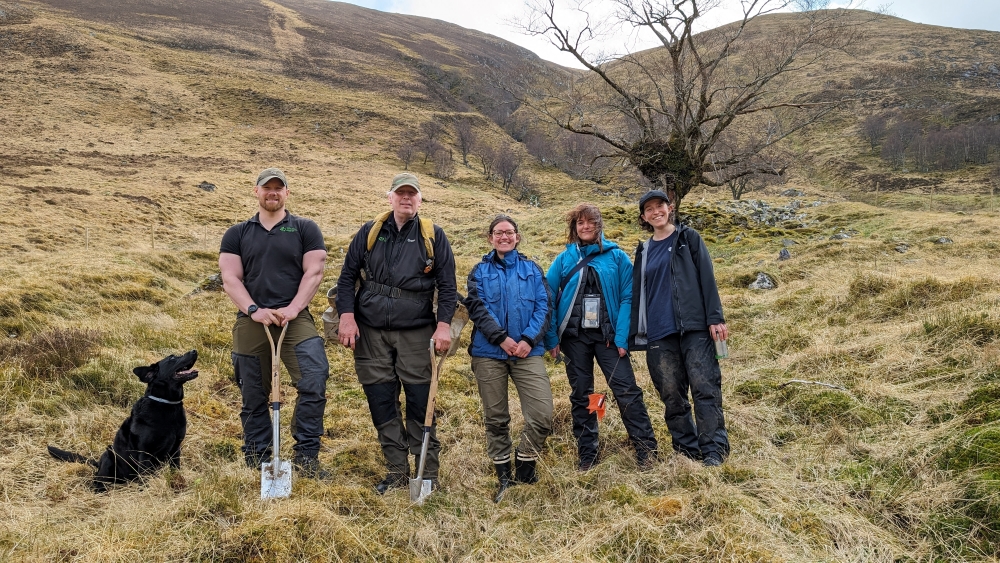UHI collaborate in conservation initiative to save Scotland’s wych elm
An ancient elm tree that has stood alone in Glen Affric for hundreds of years is now the guardian over a new generation of its species. Known as the 'Last Ent of Affric' in homage to the tree-creatures in Lord of the Rings, the tree has been chosen to help in the fight against Dutch elm disease.

The project to save wych elm from vanishing from Scotland, is a joint effort between the Royal Botanic Garden Edinburgh (RBGE), the University of the Highlands and Islands, and landowners such as Forestry and Land Scotland (FLS).
35 young elm trees have been transferred from the RBGE and replanted next to the Last Ent of Affric, which was awarded Scottish Tree of the Year in 2019. These will be the first of 200 trees planted over the next two years.
The recovery of the wych elm is part of a project aiming to increase the numbers and distribution of ten threatened native plants and is funded by a three-year grant totalling £715,000 from the Scottish Government’s Nature Restoration Fund.
FLS forester Sam Brown said: “Having lived hidden away, many miles from the closest tree of the same species, the old elm of Glen Affric has escaped the ravages of Dutch elm disease. It is fitting this site has been chosen as part of efforts to save the wych elm."
Dr Max Coleman, of the RBGE, said: "Using surviving, large wych elms in the Scottish Borders, exposed to Dutch elm disease for around 40 years, we have bred a new generation of seedlings that we hope have inherited resilience to disease from both parents.
"The offspring of these rare, promising trees are being planted in carefully selected sites that meet their needs and offer potential for natural spread. This work is assisting the formation of new populations of wild elms that have the genes and the genetic diversity that we hope will enable survival and adaptation in a changing environment."
Dr Euan Bowditch, lecturer and researcher in forestry and social ecology at UHI, added:
“I am ecstatic to see the first planting of resilient elms in the Highlands. The RBGE, UHI Inverness and I have been working together on two projects that aim to identify surviving or resilient elm to Dutch elm disease, genetically test their diversity and restore them to the landscape through cuttings and cross-pollination of survivors."
“I hope to see a Highland programme kick-off to mix in surviving elm in the Highlands and want to commend the work at the Botanics, especially the horticulturists and team that have been carefully growing these trees, so that in many years to come we will be able to see more areas of majestic mature elms back in the landscape.”
Original story from Forestry Land Scotland: The 'Last Ent of Affric' is no longer alone